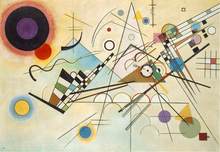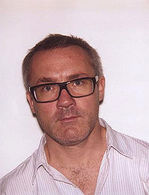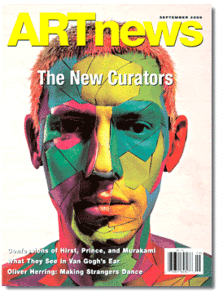A few weeks ago, I wrote in anticipation of seeing Icons of The Desert: Early Aboriginal Paintings From Papunya at the Grey Art Gallery of NYU — here — though I hadn’t been able to see it. Now I have — here’s an update.
The exhibit didn’t disappoint.
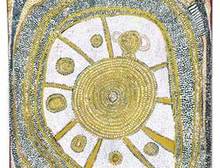 This art was new to me, and it seemed magical, intricate, often powerful. While abstract, to us, the works are somewhat representational to the aborigines who painted them. Many are landscapes, with all those dots creating hills, creeks, caves and bush. At right, for example, is part of Classic Pintupi Water Drawing by Shorty Lungkarta Tjungurrayi. The center is a water hole, and each of the small concentric circles that surround it is a “soakage,” with creeks flowing into it from waterchannels. Beyond them are hills, and Fred Myers, in his essay about the show, says that Shorty, as a forager, would have visited this place regularly.
This art was new to me, and it seemed magical, intricate, often powerful. While abstract, to us, the works are somewhat representational to the aborigines who painted them. Many are landscapes, with all those dots creating hills, creeks, caves and bush. At right, for example, is part of Classic Pintupi Water Drawing by Shorty Lungkarta Tjungurrayi. The center is a water hole, and each of the small concentric circles that surround it is a “soakage,” with creeks flowing into it from waterchannels. Beyond them are hills, and Fred Myers, in his essay about the show, says that Shorty, as a forager, would have visited this place regularly.
Myers mentioned a precursor exhibit in 1988 at the Asia Society Galleries, Dreamings: The Art of Aboriginal Australia. I am sure I did not see it. When I looked it up, I found that Thomas Kenneally, the Australian novelist, wrote about it for the New York Times Magazine, and liked it. Roberta Smith, in the Times, didn’t. In my quick search, those were the only two reviews I found online.
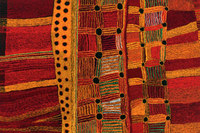 I’ve also since learned that the American University Museum, Katzen Art Center, in Washington, is currently showing Australian Indigenous Art Triennial: Culture Warriors, a traveling exhibition of more contemporary works, organized by the National Gallery of Australia –with an example at left.
I’ve also since learned that the American University Museum, Katzen Art Center, in Washington, is currently showing Australian Indigenous Art Triennial: Culture Warriors, a traveling exhibition of more contemporary works, organized by the National Gallery of Australia –with an example at left.
Interesting that these shows are going only to college art museums…
Photo: By Tony De Camillo, Courtesy the Herbert F. Johnson Museum of Art at Cornell University (top); Maringka Baker (Pitjantjatjara peoples), Anmangunga, 2006. Courtesy of Art Gallery of South Australia. © Maringka Baker (bottom).

